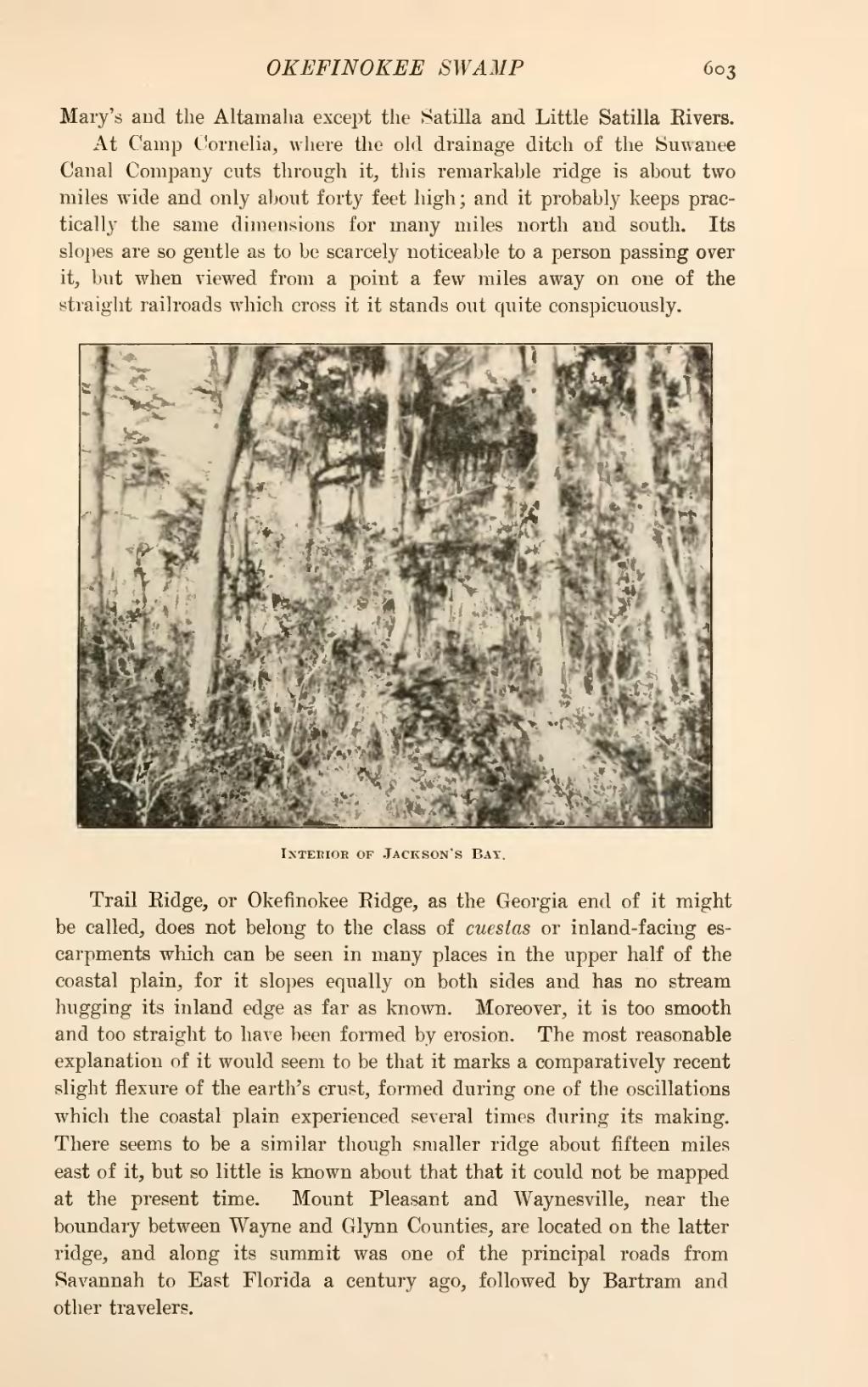Mary's and the Altamaha except the Satilla and Little Satilla Rivers.
At Camp Cornelia, where the old drainage ditch of the Suwanee Canal Company cuts through it, this remarkable ridge is about two miles wide and only about forty feet high; and it probably keeps practically the same dimensions for many miles north and south. Its slopes are so gentle as to be scarcely noticeable to a person passing over it, but when viewed from a point a few miles away on one of the straight railroads which cross it it stands out quite conspicuously.
Trail Ridge, or Okefinokee Ridge, as the Georgia end of it might be called, does not belong to the class of cuestas or inland-facing escarpments which can be seen in many places in the upper half of the coastal plain, for it slopes equally on both sides and has no stream hugging its inland edge as far as known. Moreover, it is too smooth and too straight to have been formed by erosion. The most reasonable explanation of it would seem to be that it marks a comparatively recent slight flexure of the earth's crust, formed during one of the oscillations which the coastal plain experienced several times during its making. There seems to be a similar though smaller ridge about fifteen miles east of it, but so little is known about that that it could not be mapped at the present time. Mount Pleasant and Waynesville, near the boundary between Wayne and Glynn Counties, are located on the latter ridge, and along its summit was one of the principal roads from Savannah to East Florida a century ago, followed by Bartram and other travelers.


